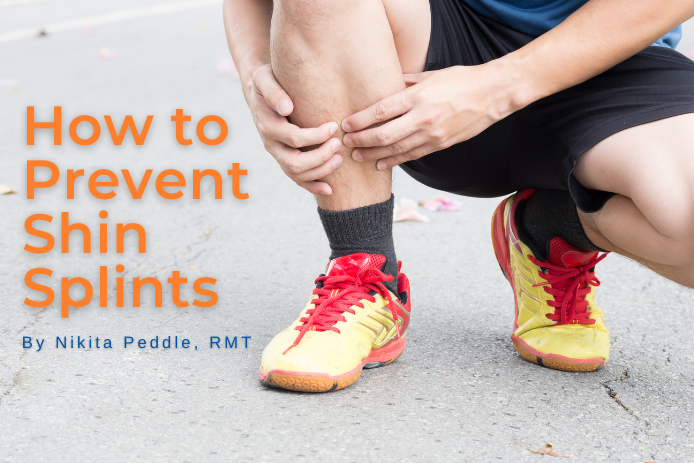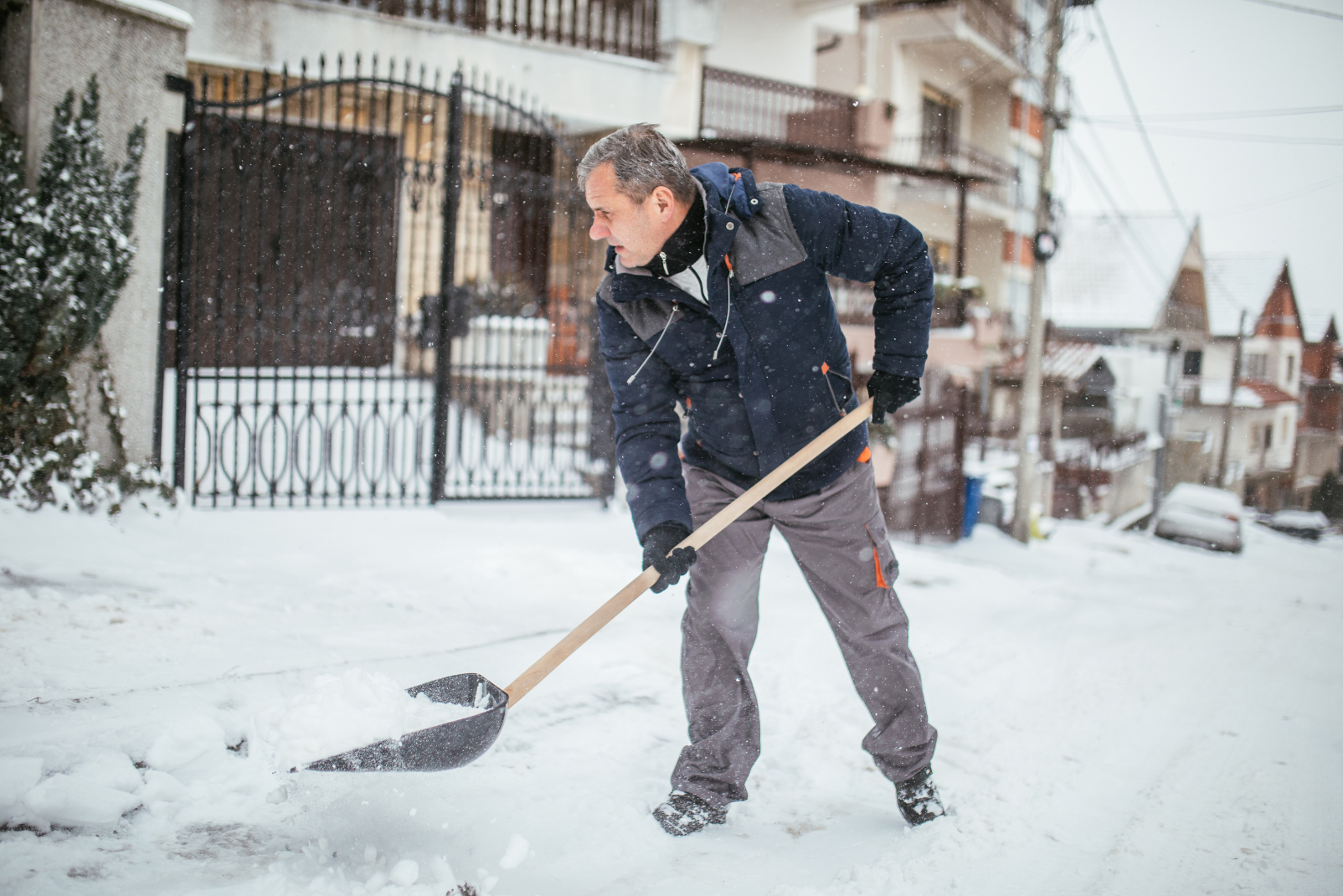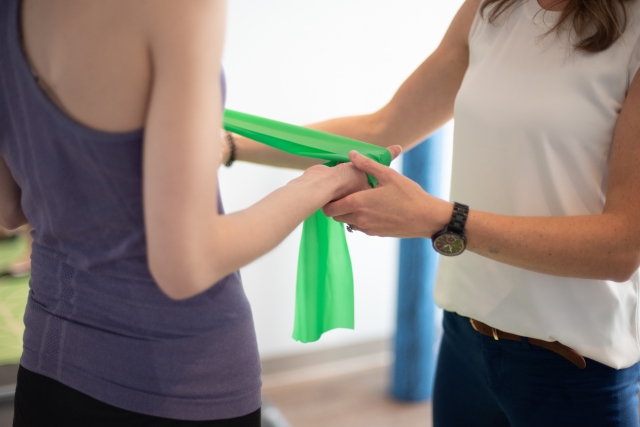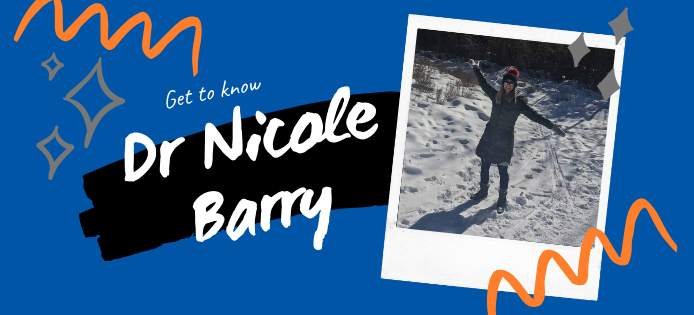
Shin splints is a common condition that is characterized by pain on the front of the lower leg (shin). This condition can be triggered by irritated muscles on the back of the leg (the calf). In the springtime we often see a lot of clients with this condition: people who are excited to get outside and enjoy outdoor activity, oftentimes after being less physically active during the colder months. When we change our level of activity and/or the types of activities we engage in, we can experience discomfort as our bodies adjust to the new demands.
Here are a few things you can try to help prevent shin splints so you can enjoy the outdoors without pain!

Recently I was talking with my brother Mike who said, “my lower back starts to ache whenever I see snow in the forecast.” If you too can relate to Mike’s pain, know that you are not alone. I hear this statement all the time in the clinic, and in a city like Calgary this can make it hard to get through the long and snowy winter. To help make this winter a bit more comfortable keep reading to see my top 6 tips for spine-friendly snow shoveling.
1. Lighten the load
Avoid the temptation to load up that snow shovel. Keeping the shovel light will reduce the load on your lower back and help keep you feeling your best. Yes, it may take a few minutes longer to clear the snow, but your spine with thank you the next day.
2. Keep the shovel close
The further you reach a loaded shovel away from your body, the greater the sheer stress in your lower back. An easy way to reduce this stress is to keep the shovel close to your core and tilt the shovel to unload the snow.
3. Avoid the “bend and twist”
Nothing makes my back hurt quite like watching someone bend and twist their spine while lifting – “ouch!” To keep your chiropractor from cringing, please remember to hinge from the hips and avoid spinal twisting whenever lifting or moving the shovel.
4. Engage your core
Gentle core engagement will act as a support brace for your lower back, providing extra stability when performing a challenging task. To create this abdominal brace, gently tense your core muscles, thinking of lifting your lower abdomen in and up.
5. Take breaks
A simple way to reduce lower back stress is to take frequent breaks. This may mean going inside to warm up, pausing to have a socially distanced chat with a neighbor, or merely stopping to enjoy some fresh air in the beautiful wintery wonderland.
6. Ask for help
If your lower back hurts before you even step outside, then consider asking a family member or neighbor for help. Pain is an important signal that the body uses to get your attention. Listen to your body and avoid pushing through the pain.
Written by Dr. Caitlyn Cameron BSc(Hons), BSc, DC

Though there are MANY causes of elbow pain, the most common cause of pain to the elbow is lateral epicondylitis, commonly known as Tennis elbow. Tennis elbow effects about 1-3% of the general population, and 15-30% of the workforce. 80% of those effected recover within one year. Based on its name, a high percentage of tennis players are effected by this condition (40-50%). However, it is actually more common in amateur golfers than golfer’s elbow. And hey, now that the greens are covered with snow, it’s time to talk about getting a plan in place for next season and living pain-free. 1,2,3,4,5,6,8,12.
Those who develop this condition will experience symptoms that include pain over the bony prominence at the outside of the elbow, known as the lateral epicondyle, and/or pain to the surrounding tissue. Pain can radiate into the forearm. This area may also be tender to touch. Pain is often exacerbated or made worse by gripping, twisting, lifting, or repetitive activities such as the use of tools or typing.
Lateral epicondylitis is the result of repetitive activity or overuse of the extensor tendons of the forearm, which attach their associated muscle to the outside of the elbow (at the lateral epicondyle of the humerus).
Tendons normally adapt and become more resilient when an optimal amount of tension or stress is applied to them. When the tension applied to a tendon exceeds it’s tolerance, often due to repetitive loading, micro tears occurs. These cumulative micro tears lead to tendinosis, which is essentially a symptomatic degenerative process to the tendon.
These degenerative changes to the tendon can occur over time from repetitive gripping, extending of the wrist, rotating the wrist and forearm, or from activities such as using tools/manual work, prolonged typing, playing an instrument, or from sports such as golf or tennis which require gripping with a stable wrist position. Generally, individuals with painful lateral elbow symptoms tend to underuse or rest their painful arm, which can result in further weakening of the tendon, making it more susceptible to injury, and lowering the threshold for tendon micro tears to occur. 7,11,12,13
There are many other contributing factors that can make you more susceptible to experiencing this condition, including poor posture, poor scapular stability, rotator cuff pathology, nerve impingement, history of smoking, a labour type job, and obesity. 1,8,12
So now what? A few helpful tips for success:
Modify your activity but stay active! Initially, take aggravating activities out of your daily routine, or modify the way you perform a task to keep them pain-free. This may include: taking breaks from typing throughout your work day, adjusting your work station, golfing less days per week or less holes per round, wearing a counterforce brace to offload your elbow, or even simple activities such as lifting a milk jugs with your other hand. 7, 12
Posture, posture, posture: Have you ever heard the phrase “Sh$t flows downhill? Well this is VERY true for not only sh$t but also for pain in your elbow. Working on your posture and your postural and scapular endurance/stability can help offload the elbow during aggravating activities. Don’t slouch. By mindful of your posture throughout the day, and change positions often. Ensure you have good desk ergonomics if you work at a computer. Your wrists should be supported on a pad (or rolled up towel), and placed in a neutral position versus extended. 7,12
Counterforce brace: The use of a counterforce brace (tennis elbow brace) which when worn correctly applies compression just below the tender area of your forearm, can reduce the load to the tendons that attach at your elbow, therefore reducing pain during aggravating activities. 7,12,13
Physiotherapy: A physiotherapist will perform an examination, help determine a correct diagnosis (remember, MANY causes of elbow pain, and not just local to the elbow), and guide you through the proper rehabilitation process specific to you, your lifestyle, and your goals. Treatment should include a gradual and progressive exercise program, education and strategies for self-management, activity modifications, and may also include dry needling/acupuncture to change muscle tension, manual therapy, and taping to offload the painful area.
A gradual progressive home exercise program to build up strength in your forearm muscles, and making their associated tendons more resilient, as prescribed by your physiotherapist is a KEY component to treating this condition. Working on posture, core, and scapular stability is also as important part of the process. 7, 8,9,11,12,13.
Injections: Research has shown that PRP and prolotherapy injections may to beneficial in treating lateral epicondylitis in addition to a good progressive exercise rehabilitation program. One study showed that physiotherapy and physiotherapy plus prolotherapy are optimal over prolotherapy alone at 12 weeks. Cortisone injections, although good for relieving pain in the short term, are actually worse for pain at 3 months and beyond compared to physiotherapy and a wait and see approach. 7, 8,9,10,11
Final thoughts:
This topic is SO complex, and this is just a small generalized glimpse into this common condition without mucking the waters. Remember, this is just one of the many conditions that causes lateral (outside) elbow pain. If you are experiencing any pain with life, please see a health professional, such as a physiotherapist, to better assess and help guide your care. The above is just a starting place.
Stay healthy, Stay active, Stay kind.
Regards,
Kayla Eagle, PT, MScPT, Bkin
References
1. Shiri R, Viikari-Juntura E, Varonen H, Heliövaara M. Prevalence and determinants of lateral and medial epicondylitis: a population study. Am J Epidemiol. 2006 Dec 1;164(11):1065-74. doi: 10.1093/aje/kwj325. Epub 2006 Sep 12. PMID: 16968862.
2. Walker-Bone K, Palmer KT, Reading I, Coggon D, Cooper C. Prevalence and impact of musculoskeletal disorders of the upper limb in the general population. Arthritis Rheum. 2004 Aug 15;51(4):642-51. doi: 10.1002/art.20535. PMID: 15334439.
3. Ranney D, Wells R, Moore A. Upper limb musculoskeletal disorders in highly repetitive industries: precise anatomical physical findings. Ergonomics. 1995 Jul;38(7):1408-23. doi: 10.1080/00140139508925198. PMID: 7635130.
4. Stockard AR. Elbow injuries in golf. J Am Osteopath Assoc. 2001 Sep;101(9):509-16. PMID: 11575037.
5. McCarroll JR. The frequency of golf injuries. Clin Sports Med. 1996 Jan;15(1):1-7. PMID: 8903705.
6. Gosheger G, Liem D, Ludwig K, Greshake O, Winkelmann W. Injuries and overuse syndromes in golf. Am J Sports Med. 2003 May-Jun;31(3):438-43. doi: 10.1177/03635465030310031901. PMID: 12750140.
7. Vaquero-Picado A, Barco R, Antuña SA. Lateral epicondylitis of the elbow. EFORT Open Rev 2016;1:391- 397. DOI: 10.1302/2058-5241.1.000049.
8. Bisset L, Beller E, Jull G, Brooks P, Darnell R, Vicenzino B. Mobilisation with movement and exercise, corticosteroid injection, or wait and see for tennis elbow: randomised trial. BMJ. 2006 Nov 4;333(7575):939. doi: 10.1136/bmj.38961.584653.AE. Epub 2006 Sep 29. PMID: 17012266; PMCID: PMC1633771.
9. Bot SD, van der Waal JM, Terwee CB, van der Windt DA, Bouter LM, Dekker J. Course and prognosis of elbow complaints: a cohort study in general practice. Ann Rheum Dis. 2005 Sep;64(9):1331-6. doi: 10.1136/ard.2004.030320. Epub 2005 Feb 11. PMID: 15708885; PMCID: PMC1755654.
10.Coombes BK, Bisset L, Brooks P, Khan A, Vicenzino B. Effect of corticosteroid injection, physiotherapy, or both on clinical outcomes in patients with unilateral lateral epicondylalgia: a randomized controlled trial. JAMA. 2013 Feb 6;309(5):461-9. doi: 10.1001/jama.2013.129. PMID: 23385272.
11.Bisset LM, Vicenzino B. Physiotherapy management of lateral epicondylalgia. J Physiother. 2015 Oct;61(4):174-81. doi: 10.1016/j.jphys.2015.07.015. Epub 2015 Sep 8. PMID: 26361816.
12.Cutts S, Gangoo S, Modi N, Pasapula C. Tennis elbow: A clinical review article. J Orthop. 2019 Aug 10;17:203-207. doi: 10.1016/j.jor.2019.08.005. PMID: 31889742; PMCID: PMC6926298.
13.Ma KL, Wang HQ. Management of Lateral Epicondylitis: A Narrative Literature Review. Pain Res Manag. 2020 May 5;2020:6965381. doi: 10.1155/2020/6965381. PMID: 32454922; PMCID: PMC7222600.

Meet our newest friendly face, Dr. Nicole Barry DC! Dr. Nicole is an experienced chiropractor who can be found at both our south (Acadia/Willowpark) and north (Evanston) Calgary locations. Learn more and book an appointment with her here: https://energizehealth.ca/book-online.html
Hi! I'm Dr. Nicole! As a chiropractor, I believe the key to a happy and healthy life starts with motion. The way you move can not only affect how you perform activities, but also the perception of how your body feels. Our bodies were designed to move and I am passionate about helping people function at their best.
This is a principle I have grown to respect in both my professional and personal life, and the reason I became a chiropractor.
I graduated from Western University with a Bachelor of Arts in Kinesiology before completing my Doctor of Chiropractic in 2013 at Canadian Memorial Chiropractic College in Toronto, Ontario. For the last seven years I have practiced in a variety of clinical settings and gained experience treating a wide scope of injuries. Whether you are a recreational runner, a busy mother, or working from home with a less than ideal set up, I strive to understand what your goals are and help you reach your full potential.
I am a big proponent that different bodies require different treatments. While most people associate chiropractic care with adjustments, this is just one of the tools in my toolbox. I like to use a combination of soft tissue therapies, adjustments, mobilizations, kinesiology taping, custom orthotics and rehabilitative exercises.
Many people traditionally seek my services for neck and low back pain, but I am also well trained to diagnose and treat other areas of the body such as shoulders, elbows, wrists, hips, knees and feet.
Outside of the clinic, I love to stay active with an assortment of exercises. Whether it’s barre, pilates, weight-lifting, hiking or running outside, variety is the spice of life!Subcategories
Archive
- ► 2024 (5)
- ► 2023 (4)
- ► 2022 (9)
- ► 2021 (5)
- ► 2020 (5)
- ► 2019 (5)
- ► 2017 (5)
- ► 2016 (5)
